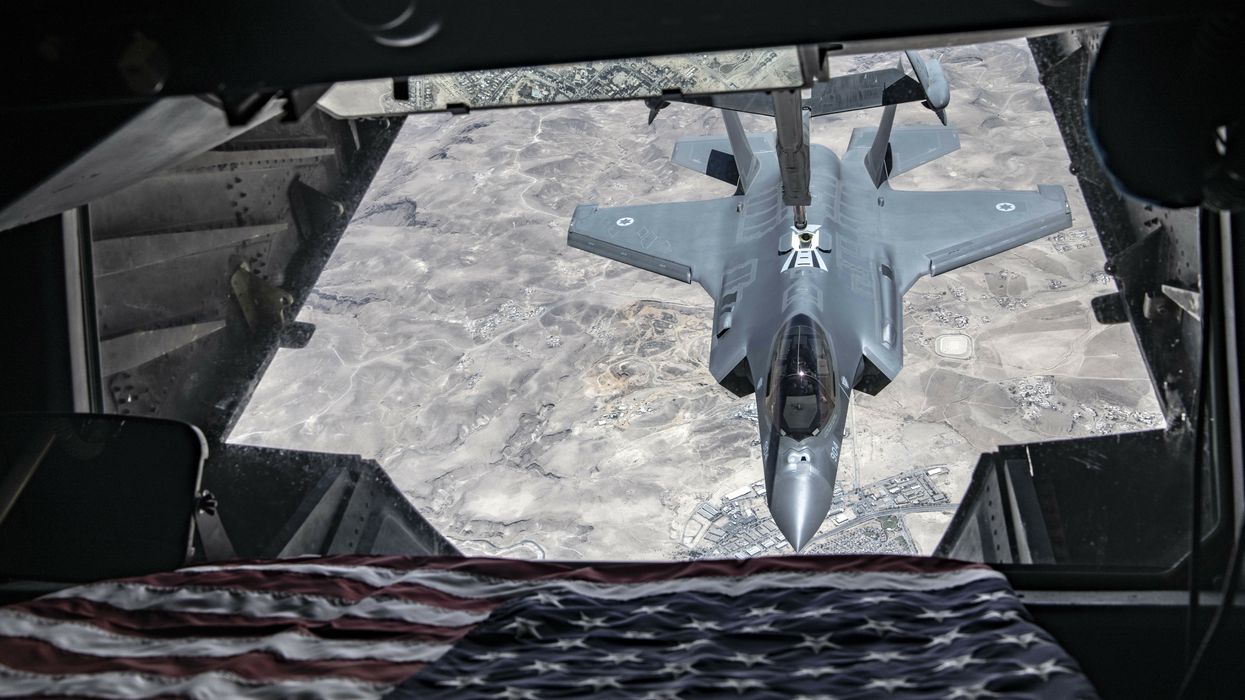President Trump has no strategy for Iran. After ordering the assassination of Maj. Gen. Qassem Soleimani, he was not prepared for the Iranian response on two U.S. air bases in Iraq this evening. His national-security process is dysfunctional. His legal justification is bunk. In claiming to have preempted an imminent attack, he and his cabinet may be lying.
All are important criticisms that politicians and analysts have repeated since the assassination. They are also utterly inadequate.
Donald Trump’s Iran policy — the current policy of the United States — is driven by a thirst for vengeance and domination. Of course Trump has no coherent strategy, makes slipshod decisions, and flouts the law. That is the point. At every level, from the targeting of Soleimani to the very worldview of the president and Iran hawks, the Trump administration is out to assert the mastery of the United States, and its leader, over all else.
The current crisis cannot be understood without appreciating this brute reality. And it cannot be overcome unless the United States chooses to escape the cycle of violence that Trump has refueled but that began well before.
Trump appears to have approved the Soleimani strike in the pursuit of revenge more than any legitimate policy aim. Although the administration asserts that it acted to thwart an “imminent” attack on Americans, reports have cast serious doubt that any such plot existed. It is hard to imagine how killing a top general would halt an attack already in motion. The simplest explanation is the one Trump himself gives: “They attacked us & we hit back.”
Vengeance alone might have dictated an eye for an eye. Indeed, the administration initially struck Iran-aligned militias after they killed a U.S. contractor in Iraq and wounded several U.S. service members. But Trump famously likes to hit back “ten times harder,” as the First Lady put it, because he seeks not only to exact revenge but to assert dominance. When his advisers gave him the option to do so in the midst of militia protests at the U.S. Embassy in Baghdad, he took it, assassinating perhaps the second-most important figure in Iran’s government.
Now the president openly threatens to avenge any Iranian retaliation “in a disproportionate manner.” He has vowed to strike 52 targets “representing the 52 American hostages taken by Iran many years ago.” Included on the supposed list are Iranian cultural sites. As law professors scrambled to note, disproportionate attacks and cultural destruction are war crimes. Yet the brutality that makes them illegal is precisely what attracts Trump, who pledged in his campaign to “bring back a hell of a lot worse than waterboarding.”
If norms won’t constrain Trump, neither will a strategy. Trump is too lusty a hater to follow one. After he committed an act of war against Iran, he threatened Iraq with “very big sanctions” and a large bill if it demanded that American troops leave the country. The predictable effect was to alienate Iraq, which has now requested a U.S. withdrawal, much as Trump’s previous shakedown of South Korea has diminished diplomacy with the North.
Trump “owes the American people an explanation of the strategy,” Joe Biden charged last week. But Trump has no strategy and never will. To pretend otherwise flatters him and evades the true danger. Trump, bent on dominance both personal and martial, is inclined to make an enemy out of everyone.
If war comes, then, this will be Trump’s war. At the same time, in thirsting for vengeance and domination, and placing these pursuits above the public interest, Trump is amplifying what has propelled U.S. foreign policy for decades.
Since 9/11, the United States plunged itself into a spiral of conflict it called the “global war on terror.” Terrorists attacked America, and America hit back — ten times harder. It occupied Afghanistan, invaded Iraq, tortured and detained, and rained down bombs by drone. Approximately 800,000 people have died in America’s post-9/11 wars. Indirect deaths are multiples greater. And for what? The terrorists keep coming: there were nearly four times as many Sunni Islamic militants as of November 2018 than on 9/11. The war is “endless” because, longevity aside, it serves no end except its brutal perpetuation.
While Trump revels in asserting supremacy, American leaders have long taken their country’s birthright to be the armed domination of the Middle East and indeed the world. The United States expects that others will follow its lead or meet its justice. The Islamic Republic of Iran, born in defiance of the “Great Satan,” continues to upset this self-concept, even after America’s strategic interests in the Middle East have shrunk nearly to zero. Which is why the 2015 nuclear deal enraged the Obama administration’s critics, Trump among them. They feared not that it would fail to prevent Iran from getting the bomb, but that it would succeed — and thereby deprive the United States of a rationale to dominate the region and discipline its foe.
In agitating against diplomacy, however, the Iran hawks have now stumbled onto a new rationale for war: essentially none at all. This is a war to “hit back,” plain and simple.
At least, one might be tempted to say, President George W. Bush attempted to justify the Iraq war of 2003 in strategic, legal, and humanitarian terms. Yet the two run-ups to war are not so different. Bush, too, acted for reasons ultimately difficult to rationalize and impossible to separate from the desire for vengeance after 9/11. In Iraq, the United States waged an aggressive war, which advanced no legitimate interest, only death and destruction. Now, after Iran has shot back with attacks on U.S. air bases in Iraq, Trump’s America may take another swing.
















